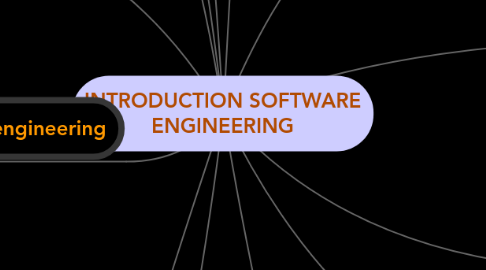
1. Requirements management
1.1. Content
1.2. Personality
1.3. Positioning
2. Comuter
2.1. Software
2.1.1. Operating system
2.1.2. Application software
2.2. Handware
2.2.1. Input device
2.2.2. Output device
3. Software process
3.1. Perspective
3.1.1. People
3.1.2. Technology
3.1.3. Methods and Tools
3.2. Process
3.2.1. Entry (E)
3.2.2. Task (T)
3.2.3. Validation (V)
3.2.4. Exit (E)
3.3. Defined Process
3.3.1. Soft organization
3.3.1.1. CEO
3.3.1.2. CIO
3.3.1.3. SM
3.3.1.4. SE & TL
3.3.2. Process
3.3.2.1. Define
3.3.2.2. Documented
3.3.2.3. Trained
3.3.2.4. Used
3.3.2.5. Measured
3.3.2.6. Verifiel
3.3.2.7. Continuously improve
3.4. Software Process Model
3.4.1. RUP
3.4.2. V Model
3.4.3. WaterFall model
3.4.4. Scrum model
3.4.5. Phototyping model
3.4.6. RAD model
3.4.7. Incremental model
3.4.8. Spiral model
4. Software engineering
4.1. Phases
4.1.1. Definition
4.1.2. Development
4.1.3. Maintenance
4.1.4. Definition
4.1.5. Development
4.2. Architechs
4.2.1. SE Principles
4.2.2. Software methods
4.2.3. Software tools
4.2.4. Software Process
5. Risk managenent
5.1. Cause of problems
5.2. Type of risk
5.2.1. Project risk
5.2.2. Technical risk
5.2.3. Business risk
6. Software Requirement
6.1. Elicitation
6.2. Analysis
6.3. Specification
6.4. Validation
7. Software Measurements & Metrics
7.1. Cost
7.2. Scope
7.3. Time
8. Software Project
8.1. Phases
8.1.1. Planning
8.1.1.1. Launch
8.1.1.2. Planning
8.1.2. Monitoring & Control
8.1.2.1. Executing
8.1.2.2. Monitoring & controlling
8.1.2.3. Closing
8.2. Planning process
8.2.1. Decompose requirement
8.2.2. Etimate resources
8.2.3. Etimate product size
8.2.4. Etimate schedule
9. Software design
9.1. Sell your own products
9.2. Sell your own services
9.3. Grow your visibility
10. Software Quality
10.1. SQC
10.2. SQA
11. The Software Testing
11.1. Definitions
11.1.1. Testing
11.1.2. Varification
11.1.3. Validation
11.1.4. Debugging
11.1.5. Failure
11.1.6. Defect
11.1.7. Error
11.2. Methods
11.2.1. Back box
11.2.1.1. Input and Output
11.2.2. White box
11.2.2.1. Internal structure
11.2.2.2. Logic
11.3. Types
11.3.1. Unit test
11.3.2. Intergration test
11.3.3. Function test
11.3.4. Regession test
11.3.5. System test
11.3.6. Validation test
11.3.7. Installation test
11.3.8. Unit or module test
11.3.9. Functionsal and integration test
11.4. Test case
11.4.1. Set of input
11.4.2. Condition
11.4.3. Expected result output
12. Software Inspections and Review
12.1. TYPES
12.1.1. Infomal reviews
12.1.2. Fomal reviews
12.2. Purpose
12.2.1. Improve quality
13. Software Inspections and Review
13.1. TYPES
13.1.1. Infomal reviews
13.1.2. Fomal reviews
13.2. Purpose
13.2.1. Improve quality

